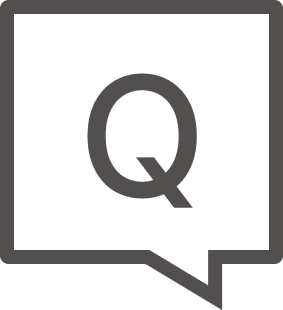As an artistic and passionate individual, you understand the importance of managing your time effectively to unleash your full creative potential. But with so many demands on your attention, it can be challenging to stay on task and bring your visionary ideas to life.
Key Takeaways
- Streamline project management and prioritize tasks effortlessly
- Eliminate distractions and maintain laser-sharp focus
- Gain valuable insights into your time usage and optimize your workflow with Timesheets.com
- Collaborate seamlessly with clients and team members
- Unleash your creative potential and deliver exceptional work on time
Index:
- The Importance of Time Management
- Mastering Project Management and Task Prioritization
- Eliminating Distractions and Maintaining Focus
- Analyzing Your Time Usage and Optimizing Your Process
- Collaborating Effectively with Clients and Team Members
- Conclusion: Unleashing Your Creative Potential and Achieving Success with Timesheets.com
- Frequently Asked Questions
The Importance of Time Management
As a creative professional, knowing how long tasks take is your most valuable asset. Whether you’re a graphic designer, writer, photographer, or any other type of artist, managing your time effectively is crucial to your success. Poor time management can lead to missed deadlines, subpar work, and increased stress levels, hindering your ability to produce your best creative output.
By mastering the art of time management, you can take control of your schedule, prioritize your tasks, and create an environment that fosters creativity and productivity.
Meeting Deadlines and Delivering Quality Work
One of the primary reasons time management is so important for creative professionals is the need to meet deadlines consistently. In the fast-paced world of creative industries, clients expect timely delivery of high-quality work.

Effectively managing your time through a to-do list and other means enables you to ensure that you allocate sufficient hours to each project, allowing you to focus on the details and deliver exceptional results. When you consistently meet deadlines and exceed client expectations, you build a reputation for reliability and professionalism, leading to more opportunities and growth in your creative career.
Balancing Multiple Projects and Priorities
Creative people often juggle multiple projects simultaneously, each with its own set of requirements and deadlines. Without proper time management, it’s easy to become overwhelmed and struggle to keep up with the demands of various clients and projects.
Implementing effective time management strategies, such as prioritizing tasks, breaking projects into manageable steps, and using tools like Timesheets.com can help you navigate the complexities of handling multiple projects with ease. This not only reduces stress but also allows you to allocate your time and energy to the most important tasks, ensuring that you deliver your best work across all projects.

Fostering Creativity and Avoiding Burnout
Effective time management is essential for maintaining a healthy work-life balance and preventing burnout, which can be detrimental to your creativity. When you’re overworked and stressed, it becomes challenging to find the mental space and energy to generate fresh ideas and produce innovative work.

Managing your time wisely means you can carve out dedicated blocks for creative exploration, experimentation, and self-care. This not only helps you maintain your passion for your craft but also allows you to approach projects with renewed enthusiasm and a clear mind, resulting in more inspired and impactful creative work.


Boost Efficiency
Dive into a Free Trial Today!
Mastering Project Management and Task Prioritization
One of the biggest challenges creative professionals face is managing multiple projects simultaneously. Without a clear system for project management and task prioritization, it’s easy to become overwhelmed, miss deadlines, and produce subpar work. However, by mastering these essential skills, you can take control of your workload, ensure that nothing falls through the cracks, and deliver exceptional results consistently.

Breaking Down Projects into Manageable Tasks
- Divide large, complex projects into smaller, manageable tasks on to-do lists
- Use “chunking” to tackle each task one at a time, making steady progress
- Utilize tools like mind maps, outlines, or project management software to visually organize projects
- Ensure that no crucial steps are missed by breaking down projects into distinct phases or components
Prioritizing Tasks Based on Urgency and Importance
- Categorize tasks using the Eisenhower Matrix: urgent and important, important but not urgent, urgent but not important, and neither urgent nor important
- Focus on tasks in the first two quadrants, and delegate or eliminate those in the latter two
- Prioritize tasks that contribute to your goals and deadlines
- Regularly reassess task priorities to ensure you’re always working on the most critical items
Setting Realistic Deadlines and Milestones
- Establish realistic deadlines and milestones for each task and project
- Consider factors such as task complexity, research and ideation time, and potential roadblocks or dependencies
- Build in buffer time to account for unexpected challenges or revisions
- Communicate deadlines clearly with clients and team members to manage expectations and maintain a steady workflow
Using Time Blocking to Allocate Focused Work Sessions
- Divide your day into dedicated blocks of time for specific activities, such as client work, administrative tasks, or creative exploration
- Set aside uninterrupted chunks of time for each task to minimize distractions and maintain focus
- Use calendar apps or time management tools to visualize your time blocks and stay on track throughout the day
- Allocate sufficient focus to each task to ensure significant progress on your projects
Regularly Reviewing and Adjusting Your Project Plans
- Establish realistic deadlines and milestones for each task and project
- Make necessary adjustments to your plans, such as reassessing task priorities, reallocating resources, or communicating changes to clients and team members
- Continuously monitor and adapt your project management strategies to stay on track and deliver exceptional work
- Remain flexible and open to adjustments in the face of unexpected obstacles or changes in project scope
Eliminating Distractions and Maintaining Focus

In today’s digital age, distractions are everywhere, making it difficult for creative professionals to maintain focus and stay productive even during common tasks. From social media notifications and email alerts to chatty coworkers and unexpected interruptions, countless obstacles can derail your concentration and hinder your creative output. By implementing strategies to eliminate distractions and maintain focus, you can create an environment that fosters deep work and allows you to produce your best creative work consistently.
Identifying and Minimizing Common Distractions
The first step in eliminating distractions is to recognize the most common sources of interruption in your work environment – especially during mundane tasks when your mind might wander. These may include social media, email, notifications, background noise, or even well-meaning coworkers or family members.

Once you’ve identified these distractions, take proactive steps to minimize their impact. Disable notifications on your devices, close unnecessary tabs or applications while working, and use website blockers or productivity apps to restrict access to distracting sites during work hours. Additionally, communicate your boundaries to others, letting them know when you need uninterrupted time to focus on your creative projects.
Creating a Dedicated Workspace for Focused Work
Establishing a dedicated workspace that is conducive to focused work is crucial for maintaining productivity and creativity. Choose a quiet location or use noise-canceling headphones to minimize background noise and distractions.
Ensure that your workspace is comfortable, well-lit, and ergonomically optimized to support long periods of focused work. Keep your workspace free from clutter and consider implementing a “do not disturb” sign or policy to signal when you’re engaged in deep work. By creating a physical environment that promotes concentration, you’ll be better equipped to tackle your creative projects with laser-sharp focus.

Practicing Mindfulness and Reducing Multitasking
Mindfulness practices, such as meditation or deep breathing exercises, can be powerful tools for improving focus and reducing stress. By incorporating these practices into your daily routine, you can cultivate a sense of calm and clarity that supports your creative work.

Additionally, it’s important to avoid multitasking, which can decrease productivity and increase the likelihood of errors. Instead, give your full attention to one task at a time and resist the urge to switch between projects or activities. Regularly check in with yourself to ensure that you’re maintaining focus and not getting sidetracked by distractions or competing priorities.
Scheduling Regular Breaks and Self-Care Activities
While it may seem counterintuitive, taking regular breaks is essential for maintaining focus and avoiding burnout. Incorporate breaks into your daily schedule to rest your mind and recharge your creative batteries.
Use this time to engage in self-care activities, such as stretching, walking, or enjoying a healthy snack. Prioritize activities that promote mental clarity and relaxation, such as exercise, hobbies, or spending time in nature. By taking care of your physical and mental well-being you won’t lose track of time, and you’ll be better equipped to tackle your creative projects with renewed energy and focus.

Unlock Productivity
Begin Your Free Trial Now!

Analyzing Your Time Usage and Optimizing Your Process
To truly master time management, it’s essential to understand how you’re spending your time. By analyzing your time usage patterns, you can identify areas where you can improve efficiency, eliminate time-wasting activities, and optimize your creative process. This self-reflection and data-driven approach will help you make informed decisions that boost your productivity and help you achieve your goals faster.

Tracking Your Time and Activities

The first step in analyzing your time usage is to track your activities throughout the day. Use time-tracking tools like Timesheets.com to record the time you spend on various tasks, projects, and activities. Be sure to track not only your billable work but also non-billable activities such as administrative tasks, meetings, and professional development. By gathering accurate data on how you spend your time, you’ll have a clear picture of where your hours are going and where there may be opportunities for improvement. For those interested in time tracking for small businesses, effective time tracking can be a game-changer, enabling better project management and resource allocation.
Analyzing Your Peak Productivity Hours
Everyone has different times of day when they are most productive and creative. By analyzing your time tracking data, you can identify your peak productivity hours and schedule your most important or challenging tasks during those times. For example, if you find that you’re most focused and creative in the morning, block off that time for your core creative work and save administrative tasks or meetings for later in the day. By aligning your schedule with your natural productivity rhythms, you can maximize your output and produce your best work.

Streamlining Your Workflows and Processes

Look for opportunities to streamline your workflows and processes based on your time usage analysis. This may involve automating repetitive tasks, delegating non-essential work, or restructuring your project management approach. For example, if you find that you’re spending too much time on email communication, consider implementing a project management tool that centralizes communication and reduces back-and-forth emails. By continuously refining your processes and eliminating inefficiencies, you can free up more time for the creative work that truly matters.
Setting Goals and Tracking Progress
Finally, use your time usage analysis to set clear goals and track your progress over time. Identify specific areas where you want to improve your time management, such as reducing procrastination or increasing your billable hours. Set measurable targets and regularly review your time tracking data to assess your progress. Celebrate your successes and adjust your strategies as needed to ensure continuous improvement. By setting goals and holding yourself accountable, you’ll be motivated to optimize your time usage and achieve your full creative potential.

Collaborating Effectively with Clients and Team Members

Whether you’re working with clients or collaborating with a team of fellow creatives, effective communication and coordination are essential. By mastering the art of collaboration, you can streamline your projects, foster strong relationships, and produce work that exceeds expectations. Here are some tips for collaborating effectively with clients and team members:
- Establish clear communication channels: Choose the most appropriate communication tools for your team and clients, such as email, project management software, or instant messaging. Ensure that everyone knows how and when to communicate to avoid confusion and delays.
- Set expectations and goals upfront: Clearly define project scope, deliverables, timelines, and responsibilities from the outset. Ensure that everyone understands their roles and what is expected of them to avoid misunderstandings and missed deadlines.
- Use a centralized project management tool: Implement a project management tool to keep all project-related information, tasks, and communications in one place. This ensures that everyone has access to the latest updates and can collaborate seamlessly.
- Schedule regular check-ins and meetings: Set up regular check-ins or meetings with your team and clients to discuss progress, address any challenges, and ensure that everyone is aligned. Use these opportunities to provide updates, gather feedback, and make any necessary adjustments to the project plan.
- Foster open and transparent communication: Encourage open and honest discussion among team members and with clients. Create a safe space where everyone feels comfortable sharing ideas, providing feedback, and raising concerns. This promotes trust, creativity, and effective problem-solving.
- Actively listen and seek feedback: Practice active listening when collaborating with others. Give your full attention to your clients and team members and seek their input and feedback regularly. This helps ensure that everyone feels heard and valued, and that the final product meets or exceeds expectations.
- Respect each other’s time and expertise: Recognize and respect the time and expertise of your clients and team members. Be punctual for meetings, respond to communications in a timely manner, and value the contributions of each individual. This fosters a positive and productive working relationship.
- Celebrate successes and learn from failures: Take the time to celebrate successes and milestones with your team and clients. Acknowledge the hard work and contributions of everyone involved. When challenges or setbacks occur, treat them as opportunities to learn and improve your collaboration processes for future projects.
- Continuously seek ways to improve collaboration: Regularly assess your collaboration processes and seek feedback from your team and clients. Look for opportunities to streamline communication, optimize workflows, and improve the overall collaboration experience. By continuously refining your approach, you can foster strong, long-lasting relationships and produce exceptional work together.
- Leverage technology to enhance collaboration: Take advantage of the latest collaboration tools and technologies to enhance your teamwork and client interactions. From video conferencing and screen sharing to real-time document collaboration and project management platforms, these tools can help you work more efficiently and effectively, no matter where your team members or clients are located.
Conclusion: Unleashing Your Creative Potential and Achieving Success with Timesheets.com

Throughout these time management tips, we’ve explored the importance of effective time management for creative professionals. Timesheets.com can help you boost your creativity, productivity, and success with its sophisticated time and expense tracking. Additionally, by mastering project management, eliminating distractions, analyzing your time usage, and collaborating seamlessly with clients and team members, you can create an environment that supports your creative vision and helps you achieve your professional goals.
Timesheets.com is more than just a time-tracking tool – it’s a powerful platform for creative professionals like you. With features like automatic time tracking, customizable project templates, detailed reports and analytics, and seamless collaboration tools, Timesheets.com streamlines your workflow, reduces administrative burdens, and frees up potentially wasted time and mental space for you to focus on creating exceptional work.
If you’re interested in exploring how time tracking can boost productivity and performance in sales roles, check out our guide on time tracking for sales.
Frequently Asked Questions

How do creatives manage their time?

Creatives manage their time by using tools like Timesheets.com , which can create shortcuts through helping creatives streamline their workflow, track their time accurately, and gain valuable insights into their productivity. With features like automatic time tracking and detailed reports and analytics, creatives can effectively manage their time, eliminate distractions, and focus on producing exceptional work.

Why is time important in creativity?

Time is crucial in creativity because it is a finite resource that directly impacts the quality and quantity of creative output. Effective time management allows creatives to allocate their hours strategically, ensuring that they have sufficient time for ideation, experimentation, and the actual production of their work.






